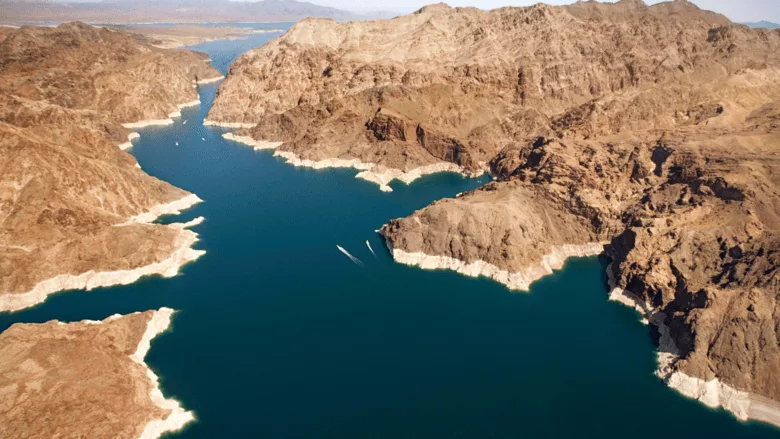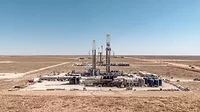Lake Mead Hits Third-Lowest Elevation in a Decade
Despite the historically low water levels, officials are working to ensure that Lake Mead remains open and accessible to the millions who visit each year.

Image via Jupiter Images from Getty Images
Lake Mead, the nation’s largest reservoir, is facing its third-lowest water elevation in a decade, according to recent figures from the U.S. Bureau of Reclamation. As of late May 2025, the lake’s level stood at just 1,057 feet above sea level—five feet lower than in April and nine feet lower than in March.
The dramatic drop comes amid what experts are calling an “exceptional snow drought,” which has significantly limited the snowmelt runoff that feeds the Colorado River and its reservoirs. In February, the National Oceanic and Atmospheric Administration’s National Integrated Drought Information System reported that some monitoring stations in the Lower Colorado-Lake Mead Basin had recorded just 23% of the historic median snowpack—the lowest since records began in 1987.
Despite the historically low water levels, officials are working to ensure that Lake Mead remains open and accessible to the millions who visit each year. “While that’s lower than historical averages, the park is fully open, and we’re ensuring that recreational access remains available across the lake,” said Maxwell Dotson, spokesperson for Lake Mead National Recreation Area, in a statement to SFGATE.
To address the situation, the National Park Service is actively implementing its Sustainable Low Water Access Plan, introduced in 2023. The plan includes infrastructure updates designed to maintain boating access down to an elevation of 950 feet. Launch ramps at Callville Bay, Echo Bay, South Cove, and Temple Bar are all slated for modifications under this initiative.
With around 20% of Lake Mead’s 6.4 million annual visitors using boat ramps and marinas, maintaining lake access is a key priority. “We’ve taken clear, decisive steps to ensure visitors can continue to launch boats, paddle, and recreate on the water,” Dotson added. “Access is not just being maintained — it’s being actively protected.”
Part of that effort includes extending Lake Mead’s most used launch ramp—Hemenway Harbor—down to approximately 1,000 feet. Construction on the extension began in June and will continue without interrupting public access. However, Dotson noted that further modifications beyond this point would be “technically and financially impractical.”
While the Bureau of Reclamation expects water levels to remain above 1,050 feet through the end of 2025, projections suggest levels could fall below 1,040 feet in 2026—underscoring the importance of current mitigation efforts.
Looking for a reprint of this article?
From high-res PDFs to custom plaques, order your copy today!






